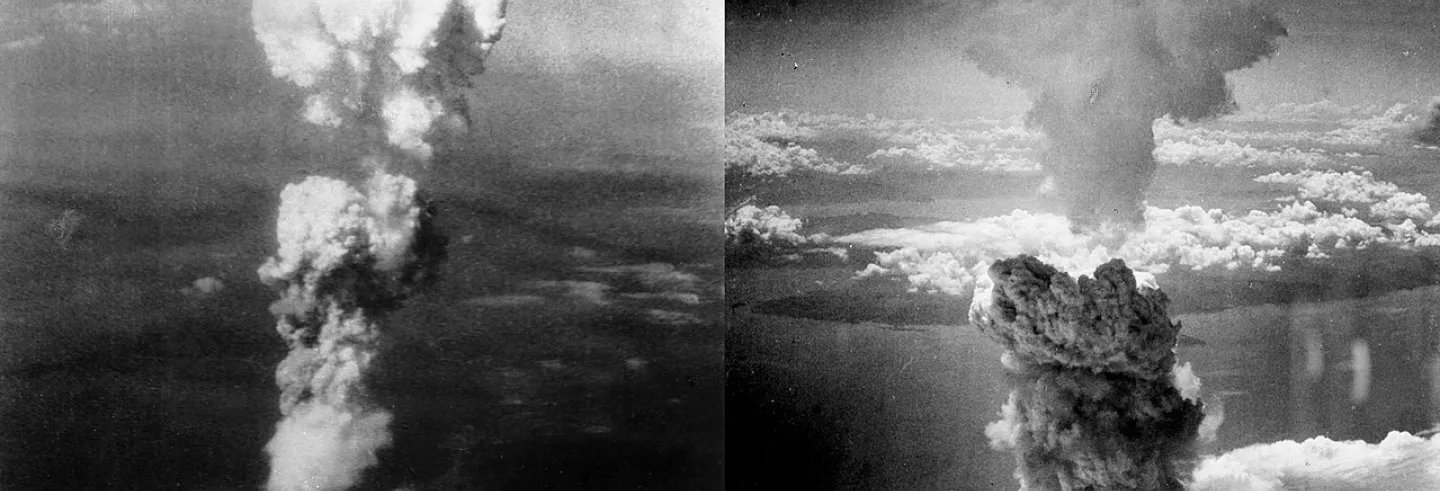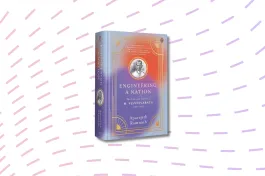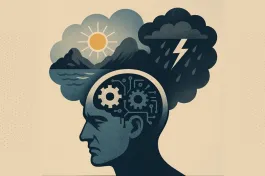Lise Meitner and her nephew, Otto Frisch, were the first to discover nuclear fission, the theoretical basis of the physics of the bombs that were dropped on Hiroshima and Nagasaki, on 6 and 9 August 1945, respectively (Sime 1966). Her opinion—even though it was, most likely, that of a minority among theoretical physicists—on the construction of the bombs, and therefore the organisation of the Manhattan Project, is as relevant as the letter drafted by Leo Szilard, the Hungarian physicist. It was Szilard, who, with fellow Hungarian physicists Edward Teller and Hans Wigner, delivered the letter to Albert Einstein, and persuaded that great man to sign and send it to US President Roosevelt, in 1939 1 Einstein’s letter was dated 2 August 1939 was delivered to President Roosevelt on October 11, 1939. Szilard, famously, came around to be the Reluctant Father of The Atom Bomb (Halász & Halász, 1974), but I would add ‘the reluctant physicist (or scientist) father.’ .
1. By Way of an Introduction
No one item can be inferred as the cause of the Second World War, or the US entering it; it is like those who attribute the defeat of the Nazis to the breaking of the Enigma-code. Sime articulates it eloquently, the reactions, entirely laudable, of one physicist:
Among scientists worldwide, almost none refused outright to work on weapons during the war; among the Allies, nearly all scientists, especially refugees, were driven by fear of the Nazi regime, the huge early successes of the German military, and the presumed superiority of German science. They had no moral compunctions about working on the bomb; …. Only after Germany was defeated without the bomb, and it was used on Japan over the protests of many leading scientists, did they understand that they worked on something over which they had no control. Perhaps Lise already understood that, after her experiences in World War I. ... Meitner wanted no part of deaths anywhere: she could not commit herself and her physics – the two were not distinct – to a weapon of war. … Her decision was instantaneous and absolute: there was no discussion. She would not work on the bomb. (p. 305-6; italics added)
The reactions of scientists—not just physicists—who worked at various locations and on various aspects of the Manhattan Project was more nuanced, as highlighted by curator Martin Moeller’s discussion with CityLab’s Amanda Colson Hurley, on the “Secret Cities”— in Tennessee, New Mexico and Washington State—exhibition at the National Building Museum in Washington, DC 2 This discussion between Moeller and Hurley should be read soberly and in its entirety, to understand the scope of the Manhattan Project, and its later impact of city structure, human behaviour and much else. :
The dropping of nuclear bombs on Hiroshima and Nagasaki had a horrific human toll, as the exhibition makes clear. Most of the people in the secret cities hadn’t known their work was part of a program to develop nuclear weapons. How did they react when U.S. forces dropped the bombs that they had unwittingly helped create? I really tried, in a small number of quotes [in the exhibition], to capture that range, because it was a range. There were people who jumped up and down and celebrated at what they thought was the end of the war, and they felt that they were justified in that view when Japan surrendered. There were others who were devastated, absolutely devastated. One of my own colleagues, it turns out her parents were both at Oak Ridge, and they were very much in that position. They were working on this, and they did not know what they were working on, and when they found out, they were absolutely horrified. There were more complex reactions in between. There were people who were relieved but sobered by the news of what happened. It also took a long time [for news] to get out of what really happened. So, the initial reactions may not have mirrored subsequent reactions as people learned more and pictures of some of the victims came out. It was very complex.
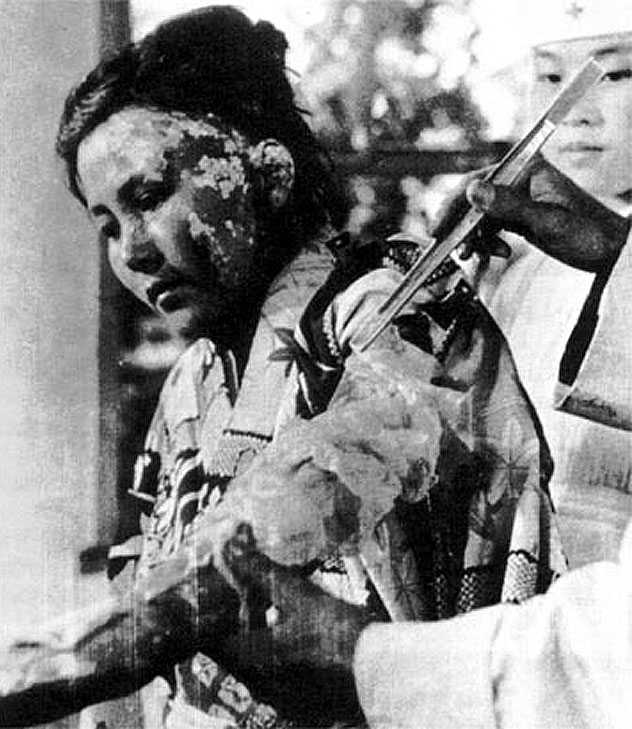
I was intrigued to read in Halpern (op. cit., p. 165):
Indeed, beneath his clown’s guise, Feynman was a sensitive man, suffering from both early grief and considerable anguish about the atomic weapons he had helped engender. These demons stymied his research from the end of the Second World War until 1947, when findings reported at the Shelter Island Conference in New York helped to spark his Nobel-prizewinning work.
The year I arrived in Japan, 1965, to spend five years, the Nobel Prize in Physics was awarded—for their work on quantum electro dynamics (QED)3 As Halpern, in his excellent birth centennial note on Feynman states: “His Nobel-prizewinning work on quantum electrodynamics included methods that even he saw as a sleight-of-hand for removing infinite terms from calculations. Yet, his results — equivalent to more systematic, rigorously expounded mathematical techniques independently proposed by co-laureates Julian Schwinger and Sin-Itiro Tomonaga — matched atomic-physics data beautifully” (Halpern, 2018, p. 164). – to the trio of Feynman, Schwinger and Tomonoga – only the second Japanese, in any subject, to be so honoured (at that time). The award, particularly to Tomonaga, together with a serendipitous encounter in reading and pondering over Robert Jungk’s fascinating book, Brighter than a Thousand Suns (Jungk, 1958), was instrumental in my decision to try to study at Kyoto University.
I, as an undergraduate engineering student at Kyoto University, was enamoured of the sciences, felt that studying physics was “the great spiritual adventure of science”. It was unfathomable for me that scientists would allow their discoveries to be used for the principles underlying the basis for the construction of the bombs that were dropped on the cities of Hiroshima and Nagasaki.
That Robert Jungk’s story about Edwin Reischauer (who was the US Ambassador in my initial year at the niversity) “saving Kyoto” (Jungk, op. cit., p.178) was fiction 4 It was not till the late 1980s that I read Reischauer’s own statement about Jungk’s mythical claim: “I probably would have done this [i.e., ‘saved’ Kyoto] if I had ever had the opportunity, but there is not a word of truth to it. As has been amply proved by my friend Otis Cary of Doshisha in Kyoto, the only person deserving credit for saving Kyoto from destruction is Henry L. Stimson, the Secretary of War at the time, who had known and admired Kyoto ever since his honeymoon there several decades earlier.” (Reischauer, 1986. P. 101) did not make any impact on me, in my desire to study at Kyoto University; I was selfishly grateful that a city with its cultural traditions was “saved” from the tragic fate that befell Hiroshima and Nagasaki.
2. Seventy-five Years of ‘Uneasy’ (Nuclear) Peace
“I am looking to you to keep that Japanese dog quiet in the Pacific.” -Churchill to Roosevelt, May, 1940.
Churchill wrote this a full one year and a half before what Roosevelt called ‘the day of infamy,’ the imperial Japanese naval fleet’s attack on the base in Pearl Harbour, Hawaii, led by Admiral Yamamoto, on the morning of 7 December 1941.
I visited Hiroshima just before the 20th anniversary of the dropping of the first nuclear (fission) bomb, “Little Boy” in that city. Three years later, in the summer of 1968, again just before the anniversary of the day the bomb was dropped, I visited—deliberately, but with sadness— the city of Nagasaki. These visits, among other things happening in the 1960s, changed my complacent view of physics, in particular, and science, in general, and their role in social development and consciousness. I was permanently disabused of the belief in the objectivity of the pure and applied sciences—even mathematics and logic.
The Cold War, the Chinese Communist Revolution of 1949, the Korean War, the Vietnam Conflict, the ‘eternal’ Indo-Pakistani rivalry that began with Partition and Independence in 1947, Israeli-Palestinian/Arab conflict(s), the deposing of Prime Minister Mosaddegh in Iran in 1953 and many of the ‘minor’ wars and conflicts in various parts of Asia, were all post-Second World War events, although the seeds may have been sown in the many pre-war years. Almost as a result, at least three (China, India and Pakistan) of the involved countries have become members of the “nuclear club”, and a fourth, Iran, may now embark upon the “adventure”. Many other countries have chosen—not without debate and discussion—to opt out of this club of weapons of nuclear-powered destruction (but all of them continued in the physics, and other scientific, nuclear research, in both pure and applied senses).
Therefore, it behoves us—the survivors, the contemporary observers and active participants of current events—to make a serious effort to understand at least recent history, if we are not to repeat “mistakes” and indulge in regrettable actions. Certain aspects of the tragic story of Hiroshima and Nagasaki, reflected in this the 75th anniversary of the first occasions of dropping nuclear bombs in fairly densely populated cities, is a sobering exercise. I think it is a case of the “Present as History” especially because the events are still “alive” in contemporary discussions of science and technology.
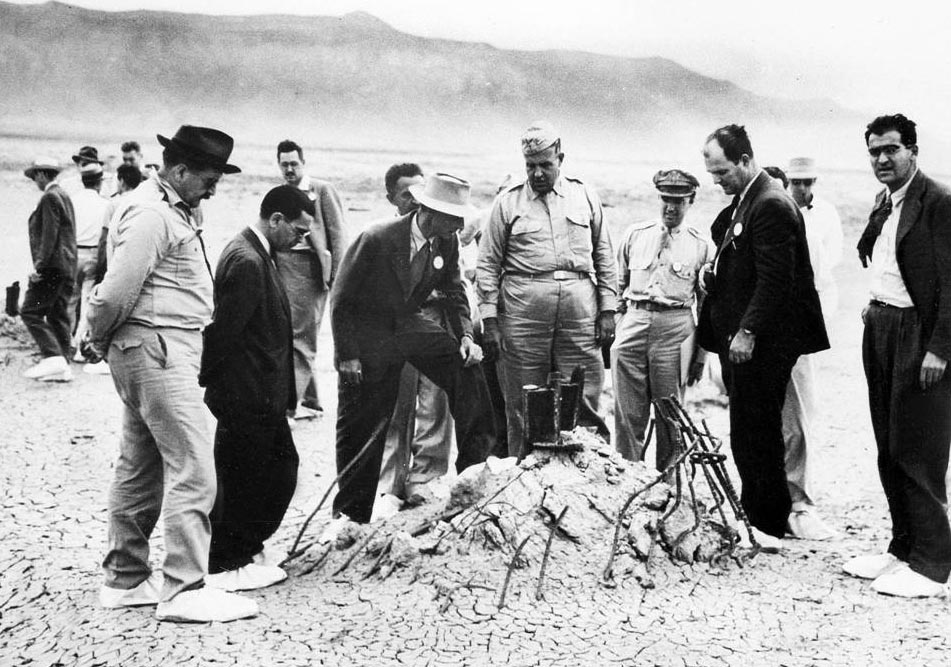
It is, surely, possible to constructed alternative histories by means of counterfactual hypotheticals: had Hitler not invaded the Soviet Union, and tried to conquer Moscow, respecting the Molotov-Ribbentrop pact to the letter, had he also respected the Munich Declaration and the peace accord with Neville Chamberlin, had he been satisfied with the acquisition of the Sudetenland, had the Japanese not attacked Pearl Harbour, had Mussolini satisfied himself the way Franco did, would the Manhattan Project be implemented—let alone successfully—in the “race” to construct the bomb before Hitler (later, the fusion bomb before Stalin and the Soviet Union)?
The same counterfactual hypotheticals could be harnessed to wonder whether it was necessary for any of the other so-called nuclear powers, including India, Pakistan and, possibly Israel (and apartheid-dominated South Africa) to develop these nuclear potentialities of destructive capabilities. India, Pakistan and Israel – even Iran – are well-endowed with high-calibre physicists (and other scientists) who will develop the frontiers of the pure and applied aspects of these subjects as parts of epistemological advances, entirely in the senses in which Bethe outlines it. 5 See the opening quote.
The art and science of promoting self-restraint, while allowing free reign for research in the fundamental aspects of all sciences has to be many-faceted, particularly institutional and organisational. Marxists would call it a means to bridge the gap between forces of production and relations of production but confine the analysis to the sphere of political economy. It leaves open the field of exploitation to unenlightened politicians like India’s Atal Bihari Vajpayee and Pakistan’s Nawaz Shariff. But they were pawns in a larger framework of research institutes developing nuclear programmes, over many previous regimes (and years), with the specific aims of producing weapons of mass destruction 6 The Kim dynasty in North Korea may have concentrated on nuclear development of weapons of destruction, with little attention to freedom in the research of the fundamental sciences. .
The self-restraint can be of a moral nature, but that is hard, if not impossible, to monitor. Therefore, the self-restraint has to be via treaties of a verifiable and observable nature, many of them depending on the goodwill and honesty of both autocratic and democratic regimes 7 See The Washington Post article of 30 September 2019 by David Nakamura (which is also relevant for the observation in the previous footnote) .
3. By Way of a Conclusion
“The stars are dead. The animals will not look. We are left alone with our day, and the time is short, and History to the defeated May say Alas but cannot help nor pardon.” -Wystan Auden on Spain
In 1986, I was invited, I think by mistake, to participate in the Summer Institute at the Ettore Majorana school of Theoretical Physics, in Erice, Sicily. Although ostensibly confined to questions of theoretical physics, part of the discussions seemed to be about restraint in the production of inter-continental ballistic missiles (ICBM) by the (then) Soviet Union and the United States. The discussions about the nature and scope of the treaty reached an impasse when Professor Antonio Zichichi made the second mistake! He called upon me to try to tell a story in an attempt to break the impasse. In a moment of inspiration I narrated the story from the Mahabharata of the death of the warrior Karna, at the hands of Arjuna while he struggled to lift the wheels of his chariot, with Arjun and his charioteer Krishna refusing to heed Karuna’s call to stay the battle in accordance with the code of valour. I spoke of how earlier when Karna unleashed his most powerful weapon at Arjuna, Krishna had the chariot lowered into the ground so that missile pierced Arjuna’s helmet and not his body 8 The next morning I was the subject of the reports, all positive, in most of the leading dailies in Italy, of doing my part to ‘ridicule the assumptions of the two hostile parties’ (my intention was not to ridicule their assumptions, but to point out the role of the knowledge of the umpire). .
My point was that the “umpire” knew the potentialities of both parties and he was able to nullify the effects of their powers, but without falsifying them!
The physics, chemistry, the quantum versions of them as well as most of the other pure and applied sciences (including mathematics and logic) of the underpinnings of the building, testing and manufacture of nuclear material, especially ingredients that go into the production of bombs, are reasonably well-known to those employed in various institutions, especially in so-called industrially advanced countries. But with India, Pakistan and smaller countries like Israel, North Korea, and, in the recent past even Libya, possessing or near to possessing nuclear weapons, the concept of “advanced countries” is, to say the least, ambiguous.
After my traumatic experiences in Hiroshima and Nagasaki in the 1960s, the disillusionment with the objectivity of physics and the physicists, the observations in Erice and the understandings of the message of, at least, part of the Bhagavad Gita, I feel that one of the ways to monitor, in a verifiable and observable way, and achieve a modicum of success, is by developing a model of a mutually destructive potential due to nuclear power as a two-person, finite, full-information, game which can be implemented 9 I want to avoid any invoking of the axiom of choice, the law of the excluded middle and any reliance of proof by contradiction. The hypothesis of finiteness does not restrict the size of the prenex normal forms (alternating quantifiers) involved in implementing such games. . Such a modelling strategy gives full scope for a ‘neutral’ umpire (of course, independent of institutions like the United Nations, Organisation for Economic Cooperation and Development and so on).
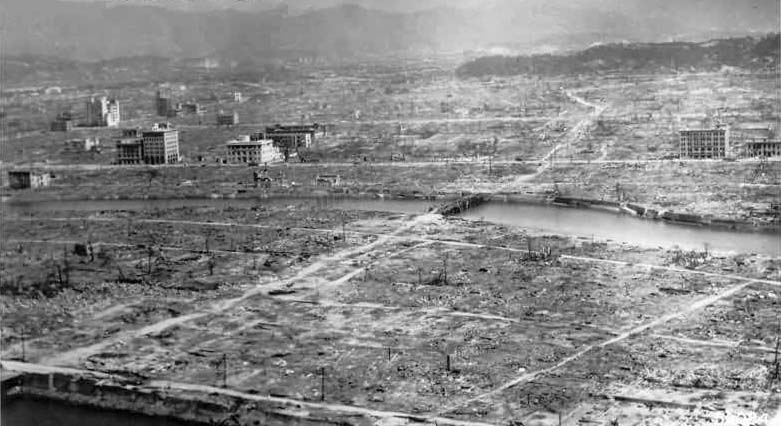
An alternative—because of the difficulties associated with the determination of a “neutral” umpire—is to understand nuclear capabilities (whether for potential war or for so-called peaceful usage, like power generation) in terms of cryptology.
The most peaceful alternative is for every nation—including the current nuclear powers—to renounce this aspect, however, to allow at the same time fundamental research, in all the applied, pure, life and social sciences. This is difficult, even to monitor, but it is one that is the chosen path of many (industrialized, large and small) countries. It is the path that I unconditionally advocate—even though it advocates some kind of moral restraint.
The Manhattan project left many physicists of the highest calibre, Robert Oppenheimer, Richard Feynman, etc., morally uneasy; the Bletchley Park enterprise in the UK did not leave a moral vacuum in those involved—Alan Turing, ‘Dilly’ Knox, Jack Good etc.,—in breaking various Nazi codes, even though they had to harness theoretical tools as sophisticated, or even more sophisticated than, those used by researchers in Los Alamos. Those working in Bletchley Park knew that they helped break Nazi codes; those in the Manhattan project were changing, irreversibly, the theoretical framework of the fundamental sciences and, incidentally only, the destructive nuclear forces unleashed on the cities of Hiroshima and Nagasaki.
In the tortured, morally troubled, mind of Robert Oppenheimer, as he witnessed the detonation of the nuclear bomb, on 16 July 1945, he is supposed to have uttered these lines from the Bhagavad Gita: ‘Now I am become Death, the destroyer of worlds.’
Many of us do not want to ‘become Death’ or be ‘destroyer of worlds.’
The immediate motivation for broaching this difficult subject, one which has ‘festered’ in my mind for over half-a-century – was my visit to Hiroshima in the summer of 1965, Nagasaki at about the same time in 1968 and the stay in India when, under the BJP government of the time, it too, entered the ‘nuclear club’ (to be followed by its neighbour, Pakistan), both of them doing so in 1998.


